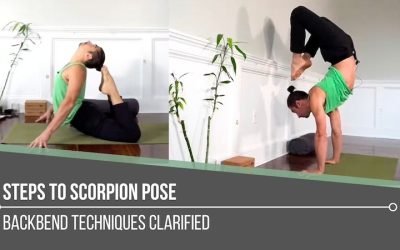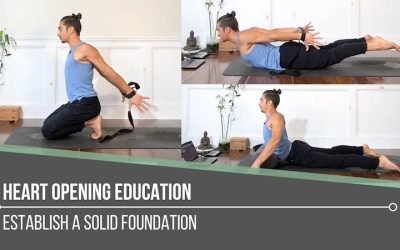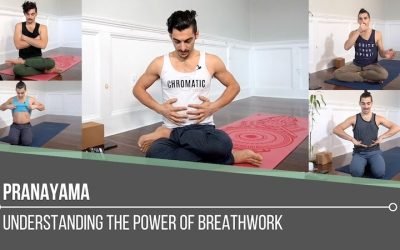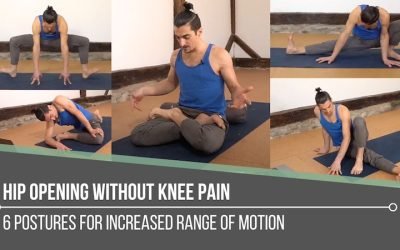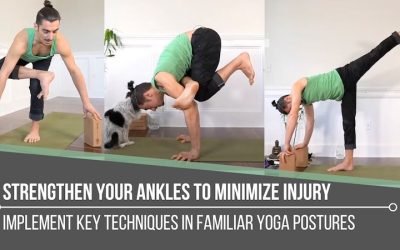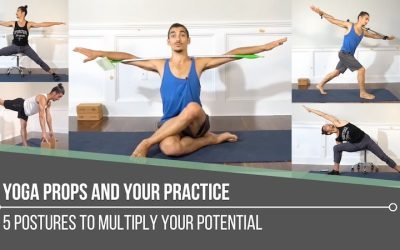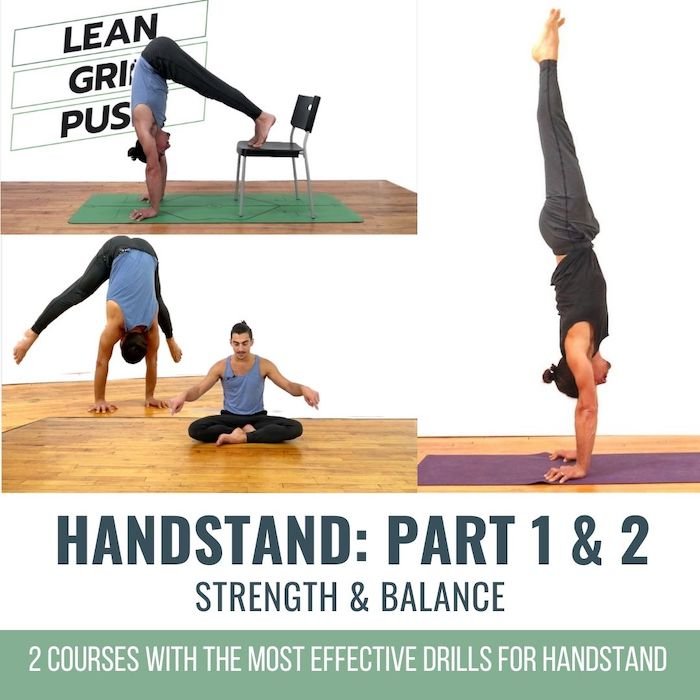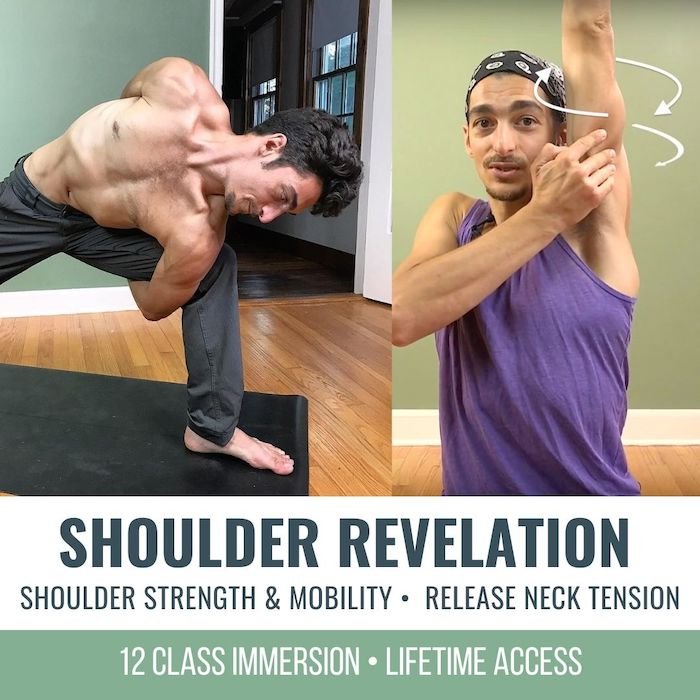Steps to Scorpion PosevrschikasanaSCORPION POSE Exhilarating, stimulating, and enlivening are a few words we can use to describe Scorpion Pose. We can also use words such as grounding or even relaxing, which might initially be considered strange descriptors. When we...
#1 Tip To Advance Your Practice
Dharana Leads to Mastery
There are multiple reasons why we practice asana (the physical practice of yoga), but most of us would agree that the primary one is that we feel better afterward. Asana offers us an opportunity to get to know our body on a deeper level because it demands the full attention of our mind. You can’t mentally check out while holding a balance posture; you must stay present. It’s that type of absolute focus that allows us to advance in anything we do. In the yoga sutras, the harnessing of our mind’s attention to focus on one thing is referred to as Dharana. We can get to the state of Dharana on and off the mat. It’s a skill that can permeate every aspect of our life. To become masterful at anything we do, we must practice this single-pointed focus. So how do we do it in our asana practice?
The challenge most of us face is that our only measure of progress in the asana practice is the attainment of postures. I say asana specifically because the yoga practice includes far more than the study of the physical body, and for this discussion, I want to target the development of our physical awareness. If the postures are our only measurement, then we subconsciously will strive for the ability to achieve more of them so long as we feel safe enough. On the other hand, if we don’t feel safe then we will likely hold ourselves back from our potential. I’d like to invite you to focus your attention on something more specific in your physical practice: targeted, intentional muscle activation and the sensations you experience while doing so. Instead of practicing many postures, focus on fewer postures with several muscle activations. The body has a tremendous amount of muscles, so limit your options by focusing on one area of your body i.e. the hips, shoulders, spine, ankles, core, etc. This is how I structure my Elements of Mastery immersion, I take you through simple postures while targeting each area of the body throughout the weekend or online course. In the video below, I give the example of how to activate 3 different muscle groups in the “hips” category for one single posture, lunge pose.
What Does it mean to be advanced?
The practice of yoga is always about developing some form of awareness through intentional actions. Advanced in the physical practice of asana means heightened proprioception of the body or “Body Awareness.” Understanding how to activate the various muscles of the body in order to move your bones/joints and be able to feel the sensations of these actions is what qualifies an advanced practitioner. For some, that may result in complex postures that require flexibility and strength, and for others, it might be living a more pain-free life. In any case, “advanced” is not aesthetic, it’s functional, which may or may not be visually pleasing to someone watching. The recent interest in fascia, the connective tissue of the body, has revealed many findings in modern research. While researchers are just a few years into the study of connective tissue, studies are showing the correlation between proprioception and chronic pain – those that are less aware of and capable of moving or activating certain areas of their body also experience chronic pain in these areas. What that means for us practicing yoga is to use the practice to develop greater body awareness if we want to decrease chronic pain. Watch the video below to see how I explore different muscle groups within a simple lunge posture
4 KEY MOVEMENTS
To simplify your adventure, let’s look at one way of breaking down potential engagement into 4 directional movements.
- Squeeze in: This can be any movement where the extremities are moving or are trying to move toward each other, or more specifically toward the midline of the body. It can also mean the front body contracting inward toward the center of our core – a full tuck position or balasana-child’s pose. In anatomy terms, I am referring to Adduction and Flexion of the body.
- Push Out: This is the opposite engagement or movement- away from the midline or when the front body expands like you are stretching out after a good night’s sleep. Anatomically speaking, this is Abduction and Extension of the body.
- Turn in: When the Extremities Rotate toward the midline of the body
- Turn out: When the Extremities rotate outward and away from the midline.
In addition, you have side bending and twisting. Side Bending is a push out on one side and a squeeze in on the opposite, while twisting the spine is a rotation along the central axis. My suggestion is to start with the four key movements as they will provide a strong platform to work with.
ELEMENTS
Another approach toward simplification of the complexity of the body is using the elements of nature (Earth, Water, Fire, Air). This is the basis that I use for the Elements of Mastery both the online version and live immersions. With the elements, you can still refer back to the 4 Key Movements.
Earth: The way I structure the earth practice in EOM is we look at the foundations of our postures – the two main connectors to the earth are the feet and the hands. There are 4 main directions of the ankles and if you practice these joint articulations throughout your standing postures, you will gain mastery over the feet and ankles; the same is true for the hands.
Water: The Element of Motion and Emotion appropriately relates to the hips which are the main area of our body that initiates movement from one place to another. The video above is a great example of hip activation in one posture. To really dive deep into developing awareness of the hips check out Hips: Rock Em and Unlock Em
Fire: Relates to the Core. The four directions of core activation are Flexion, Extension, Rotation, and Lateral flexion. Of these, Flexion and Rotation are most accurate to the element of Fire. To get to know these best you will want to practice Parts 3 and 4 of Elements of Mastery.
Air: Air relates to lateral flexion and extension of the spine along with thoracic diaphragmatic breathing. Practice Parts 4 and 5 of Elements of Mastery.
4 KEY MOVEMENTS
By exploring the multiple options within just a few postures, you will gain tremendous insight into your body. When you focus your attention in this way, more advanced postures will likely become accessible simply because of your increased ability to activate muscles and move your joints. This masterful approach done over the course of time will increase the health of your muscle tissue leading to an increased range of motion and greater strength.
Dharana is the practice of focusing your attention or harnessing the full power of your mind. Now you know how to apply it to your body, but you can also apply this skill to anything you do.
Elements of Mastery
The most in-depth online yoga immersion offered by Matt Giordano. This immersion contains several full-length workshops focusing on how the body relates to nature’s elements: Earth, Water, Fire, Air, & Space. In addition to deepening your physical practice, you will learn anatomy, adjustments, and the approach to Mastery!
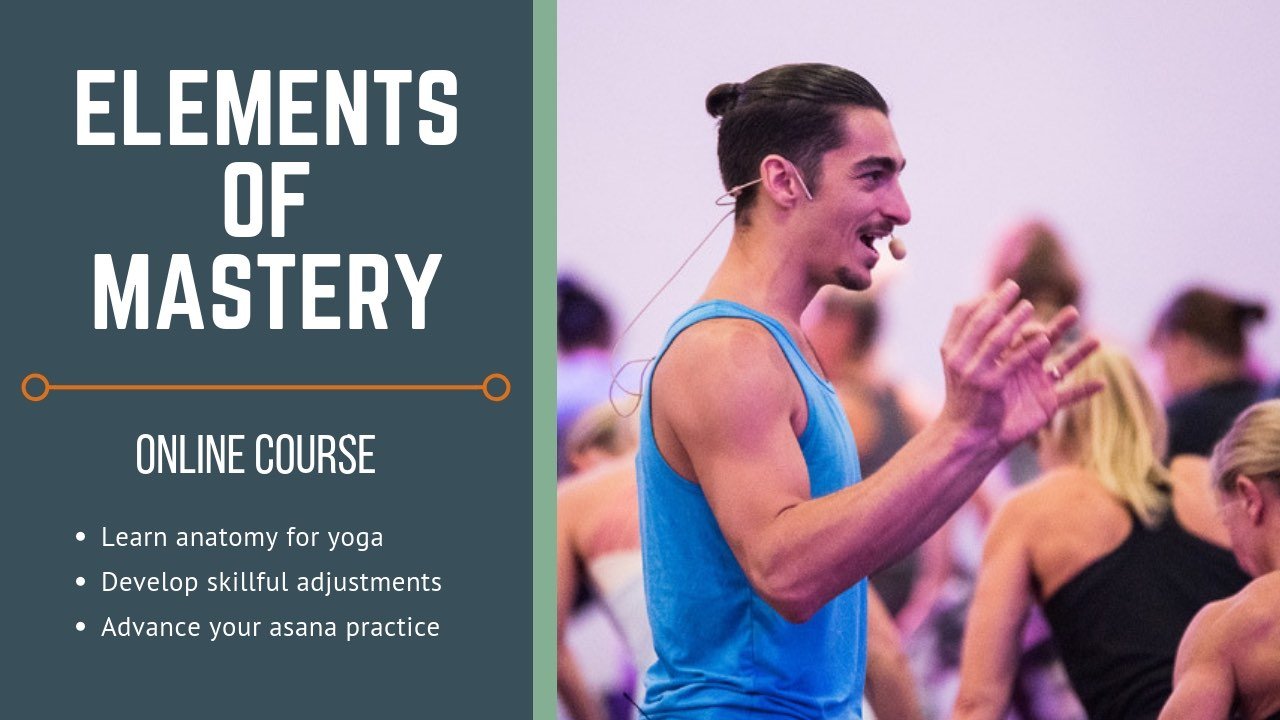

Product Bundles
Get access to 3 or more products so you can develop your yoga practice in a well-rounded and enjoyable way right from your home! You will not only save money but you will also have unlimited access to feeling better in your body and mind!
Continue Learning
Steps To Scorpion Pose
Heart Opening Education
Heart-Opening EducationbackbendHEART-OPENING EDUCATION There is a great deal to learn with regard to heart-opening postures. Of course, negotiating the execution and being aware of the anatomy involved in various heart-opening poses are some of the initial...
Pranayama
PranayamabreathworkPRANAYAMA Pranayama helps us to more deeply connect to the energy that runs through us. This can be done via a variety of breathwork practices. It’s important to understand that the breath is the physical layer through which we can access prana...
Hip Opening Without Knee Pain
Hip Opening Without Knee Painhip mobilityHIP OPENING WITHOUT KNEE PAIN "Hip opening” in a yoga class just sounds glorious if we feel confined or constricted in this area of the body and our intention is to transform this experience. The term may not sound glorious,...
Strengthen Your Ankles
Strengthen Your Anklesfoot healthSTRENGTHEN YOUR ANKLES Our feet are the foundation of our bodies. Placing great emphasis on creating ankle stability and mobility during our asana practice should be obvious; unfortunately, this is not always the case. Maintaining a...
Yoga Props & Your Practice
Yoga Props and Your PracticealignmentYOGA PROPS AND YOUR PRACTICE When it comes to incorporating yoga props into our yoga practice, we can take 1 of 2 paths. We either subscribe to the notion that if we use props, we are somehow “less capable” than others in the...
TOP RECOMMENDATIONS
Handstand Training
Learn the techniques that make Handstand fun, easy and accessible! This 2 part course consists of the top most effective exercises will increase your strength and technique so you can easefully balance a handstand.
SHOULDER REVELATION
In this 12 class immersion you will practice specific techniques to strengthen and unlock your shoulders. Each class focuses on a specific joint articulation and muscle group so you gain mastery in the shoulders.
HEART OPENERS
Finally, a 12 class immersion designed specifically to help you discover the freedom of heart openers. Learn how to avoid uncomfortable compression, and awaken your true range of motion in a step by step manner.
THE FREE TECHNIQUE PACK
When You Subscribe, You Will Get Instant Access to
- the Technique Pack: 15 yoga pose breakdowns
- exclusive online course discounts
- exclusive blogs and videos
Still Have Questions? Email Matt Directly

